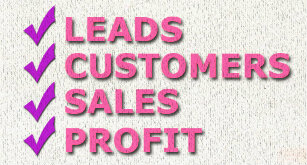
 Guess what honey – I’m Selling My Business
Guess what honey – I’m Selling My Business
When I told my husband that I wanted to leave my business he thought I was ‘going through a phase.’ A few months later when I told him that I resigned as an employee he started to take me serious. Before my dramatic upheaval, everything seemed perfect in our lives. We had a nice big house, a beautiful 2 year old, holidays to the Caribbean and the security of a nice pay cheque and growing business. In fact, the company was so prosperous that my business partner and I had been taking out 10k/month, for over a year, to reduce our shareholder loans. Life was good, but I wasn’t happy.
I’ll save my detailed reasons for wanting to leave for another article, but to sum it up after 8 years I was bored, tired and in need of a lifestyle change. That aside, when I told hubby I quit my job he freaked out. In fact, I think he walked around stunned for 3 months. He couldn’t understand why I would ‘throw away all my efforts just like that.’
Fortunately, my exit was less painful than most – at least regarding the transaction. I wanted to sell the company yet my business partner wanted to keep it. To make a long story short, he purchased some of my shares, I quit the company and the rest is history. The journey from A to B however was a rough ride.
Do I regret telling my husband? No. I suppose I had to tell him. I was the main breadwinner so it would be unfair not to. Furthermore, I didn’t have the benefit of hindsight. I had no idea what the end result was going to be.
On the flip side, if I kept it quiet and after the journey ended, said, ‘Guess what honey – we now have quite a bit of money and I can spend time with you and baby Sienna, but I’m no longer a majority shareholding in my company,’ I’m sure his response would have been very positive.
The amount of business owners I know that have kept the sale secret is substantial and I can see why. And often after a first failed attempt, the amount of secrecy increases. It’s hard enough to prepare for an exit and endure the emotional roller-coaster but to add to it your partners’ fears and worries can often cause insanity. I might seem a bit dramatic but selling a business (or exiting your business) can be heart wrenching. All the time, money, love, dedication – your whole life wrapped up into back and forth negotiations over a sum of money and a way to walk away. And to make matters worse, it’s difficult to think of a future when your present is so tied up in such a large transaction.
So if you’re not sure about when or whether to tell your partner/spouse the business is up for sale, consider asking yourself these questions:
- Can your partner handle dealing with uncertainty?
- Will your partner be able to support you rather than add to the pressure?
- Will your partner be upset if you don’t tell him or her?
- Can you tell your partner in a way that helps them to feel comfortable with the plans?
- Will your partner have a serious adverse reaction if the sale falls through?
If you do choose to tell your partner your plans, the one thing I would recommend is to keep quiet on the offer amounts. It’s bad enough if you sell for £3 million when you initially expected £10 million but adding your partners’ disappointment makes things even worse. Furthermore, I’d set the expectation that these things take a course of their own – selling a business can happen fast and you can get the value you feel you deserve or it could take ages or not happen at all.
And a final bit of advice, whether you tell your spouse or not make sure that you have someone in the business community that can act as an independent mentor throughout the process. Either a business ‘white-hair’ that has seen it, done it and has the t-shirt, or a business minded friend that can help you along the journey.
Kim Brown, Co-Founder of Business Wand, helps business owners navigate their way through the start to finish process of selling a business. Her specialty is to help owners cut costs and increase profits prior to sale. To understand how you can sell your business quickly for the highest sales price, purchase the book, “How To Sell A Business: The #1 guide to maximising your company value and achieving a quick business sale”





 Selling your business – Define your life after selling a business so you know your aiming for
Selling your business – Define your life after selling a business so you know your aiming for

 Business Valuation Essentials.
Business Valuation Essentials.
 Working On Your Business Not In It.
Working On Your Business Not In It.
 5 Tips You Must Know Before Selling Your Business!
5 Tips You Must Know Before Selling Your Business!

 Twelve Steps to Selling Your Business.
Twelve Steps to Selling Your Business.